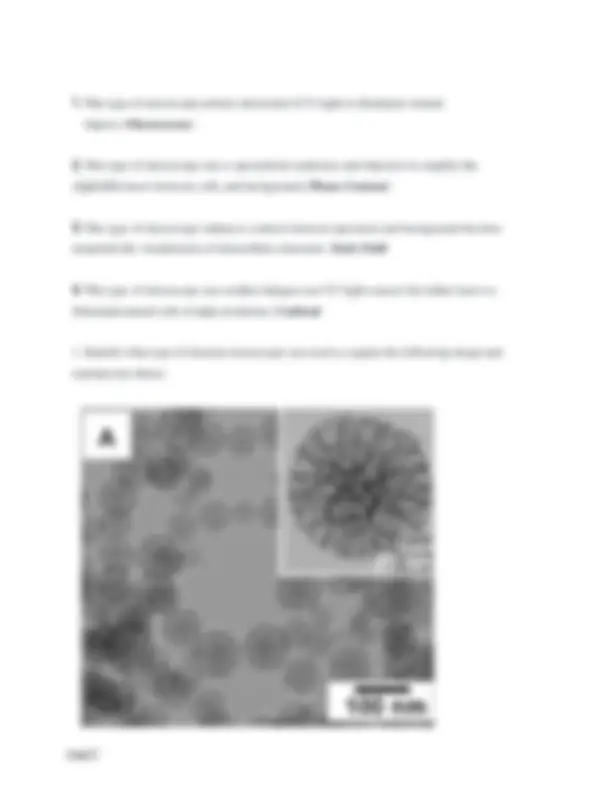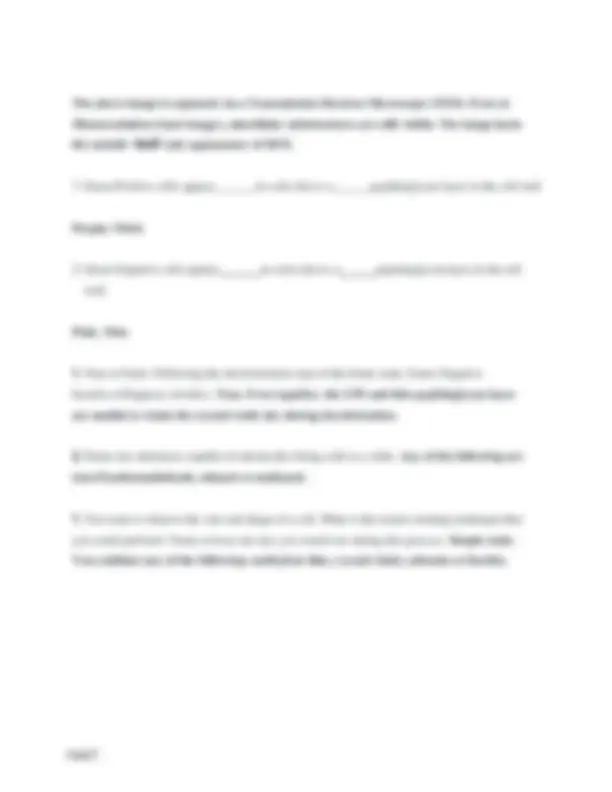





Study with the several resources on Docsity

Earn points by helping other students or get them with a premium plan


Prepare for your exams
Study with the several resources on Docsity

Earn points to download
Earn points by helping other students or get them with a premium plan
Community
Ask the community for help and clear up your study doubts
Discover the best universities in your country according to Docsity users
Free resources
Download our free guides on studying techniques, anxiety management strategies, and thesis advice from Docsity tutors
Key concepts and questions related to essential microbiology, focusing on microscopy and staining techniques. It provides an overview of topics such as the definition of a nanometer, the relationship between resolution and contrast, the use of microscope components to control light, the principles of different microscopy techniques (e.g., fluorescence, phase-contrast, dark field, confocal), the interpretation of electron microscopy images, and the application of gram staining and other staining methods. Likely intended as study material or exam preparation for a university-level microbiology course, covering fundamental knowledge and skills required for understanding and working with microscopic biological samples.
Typology: Exams
1 / 6

This page cannot be seen from the preview
Don't miss anything!




Question 1
. A nanometer is defined as: A. 10 -^3 B. 10 -^6 C.10-^9 D. 10 -^12 C. A nanometer is defined as one-billionth of a meter.
A. Objective B. Condenser C. Iris diaphragm D. Eye piece C. The iris controls the amount of light that passes through the sample and into the objectivelens. Thus, it can be adjusted (opened or closed) to alter the amount of light.
The above image is captured via a Transmission Electron Microscope (TEM). Even at 20nmresolution (inset image), subcellular substructures are still visible. The image lacks the outside ‘shell’ only appearance of SEM.